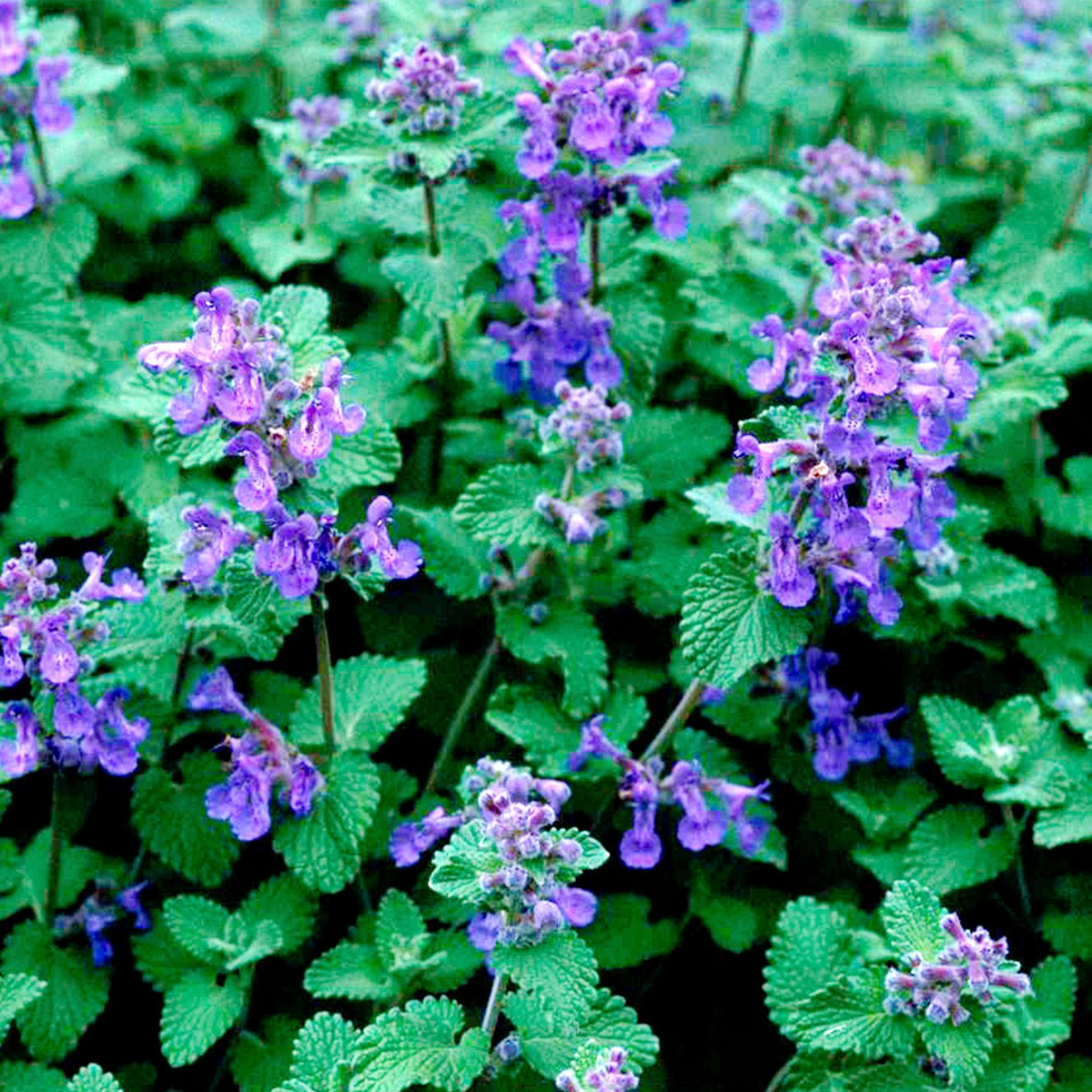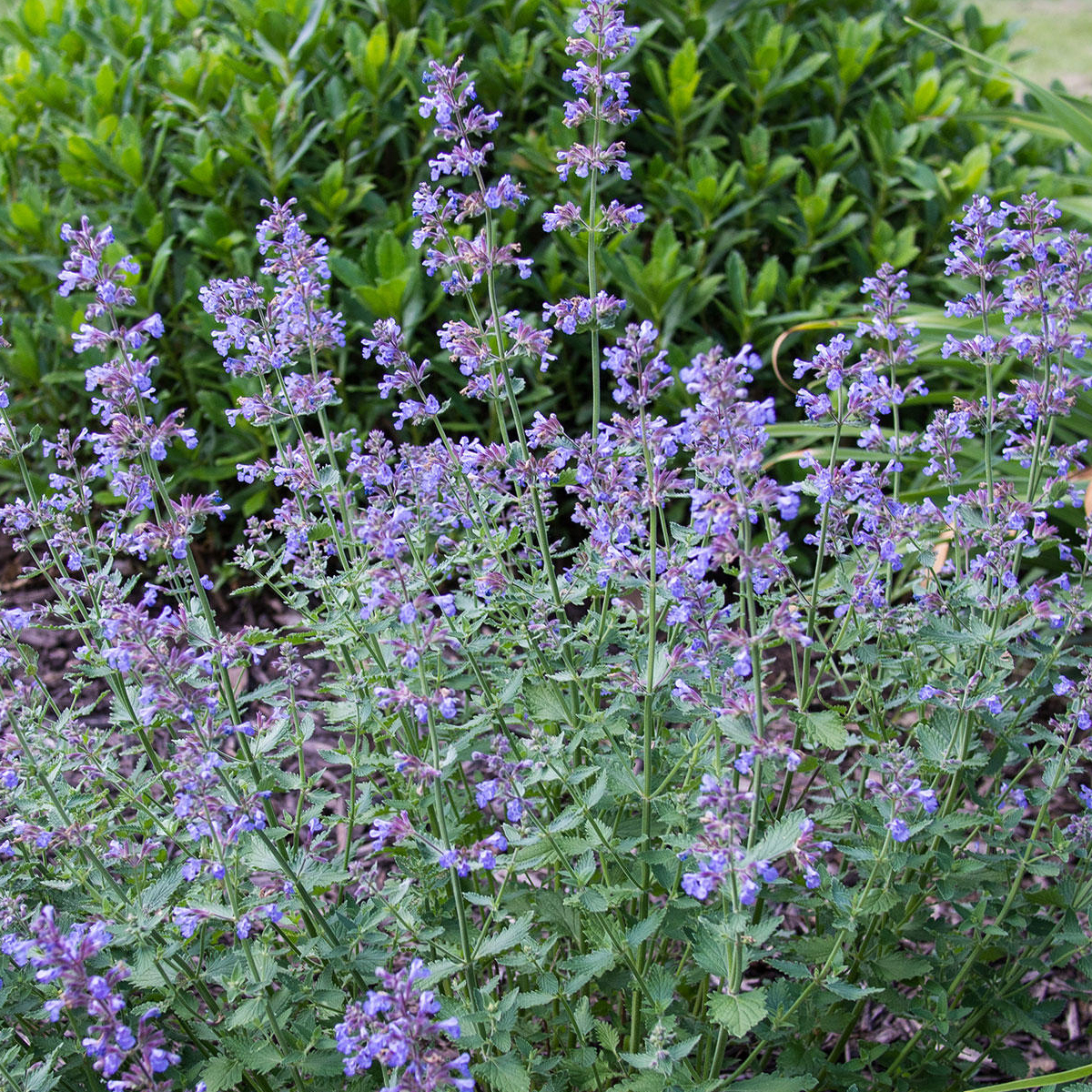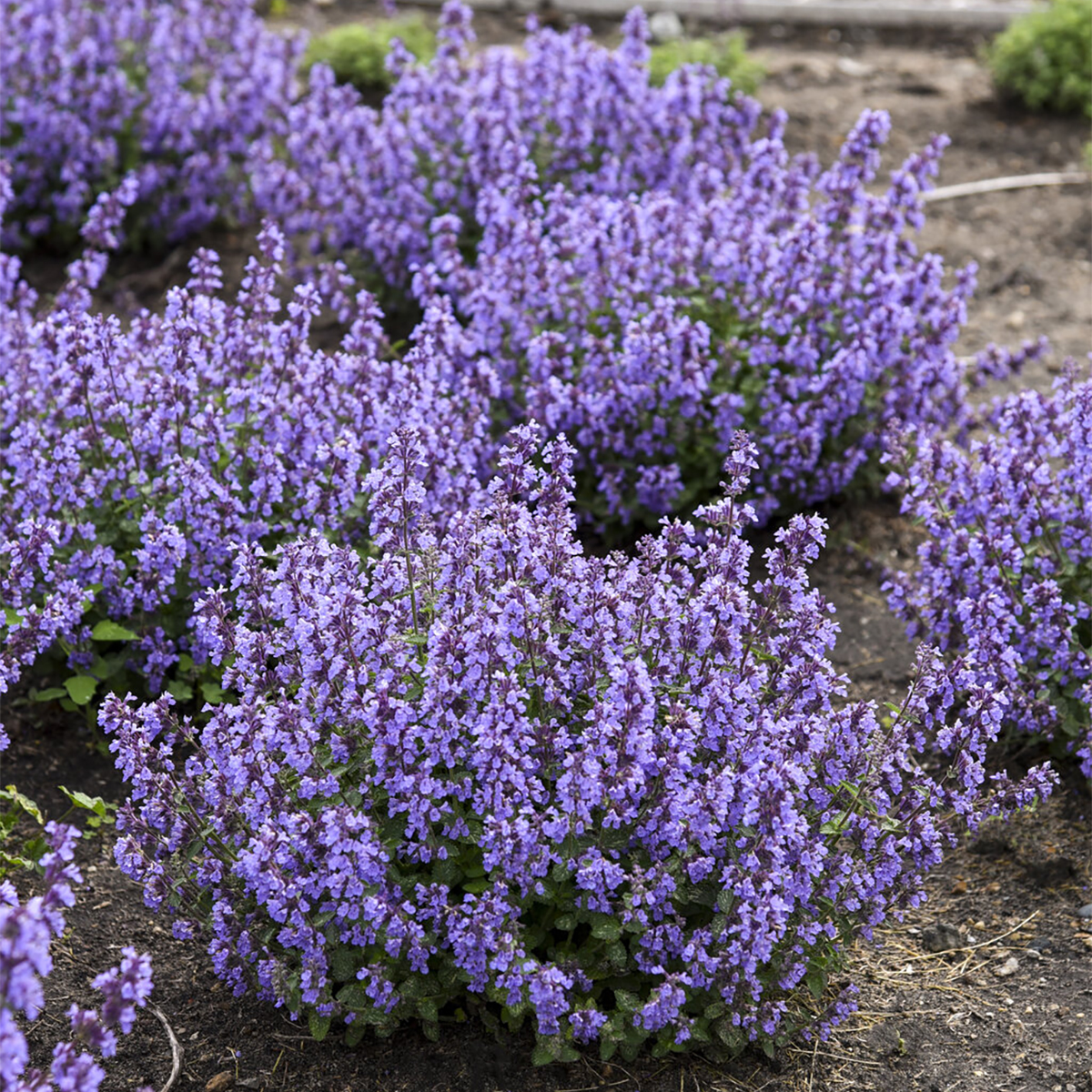(Nepeta) It’s a genus of perennial herbs in the mint family that also includes catnip (Nepeta cataria). They are extremely easy-to-grow plants with few pests or problems. Nepeta has slightly aromatic gray-green foliage with a delicate, lacy appearance. Its billowing foliage is topped with spikes of flowers in early summer with repeat blooms throughout the season. The flowers can be white, pink, or lavender-blue.
Most catmint varieties have a somewhat sprawling growth habit, making them nice plants for edging planting areas and for running along paths. However, a few tall-growing varieties, like ‘Six Hills Giant’, have a more upright growth habit. As with many scented, gray-foliage plants, catmint is deer-resistant. It grows quickly and in most climates can be planted from spring to early fall.
Catmint Care: Catmint is one of those plants that thrives on neglect. Many of the newer varieties of Nepeta are sterile hybrids that produce no viable seeds; a benefit if you don’t like the weedy, self-seeding habit of older catmint varieties. If you want to increase the number of catmint plants, the lack of viable seeds mean that you will need to either buy more plants or propagate new plants from divisions or cuttings.
Choose a full sun location with well-draining soil. A lean soil and somewhat dry growing conditions will encourage both more flowers and a stronger scent. Too much fertilizer will only make the plant grow lots of flimsy foliage.
As with most plants, the mature size of catmint depends on the variety you are growing. Most catmints are floppy, bushy plants that mature at about 10 to 24 inches tall and 12 to 24 inches wide. However, some varieties are more compact, and others that will grow four feet tall and three feet wide. New catmint varieties are being introduced regularly, so the best thing to do is to shop around and read the plant tag before you buy.
Expect your Nepeta to start blooming in early summer with repeat blooms throughout the growing season. Deadheading or shearing your plants will produce stockier plants and a lush second bloom.
Catmint is rarely bothered by any pests and diseases.




